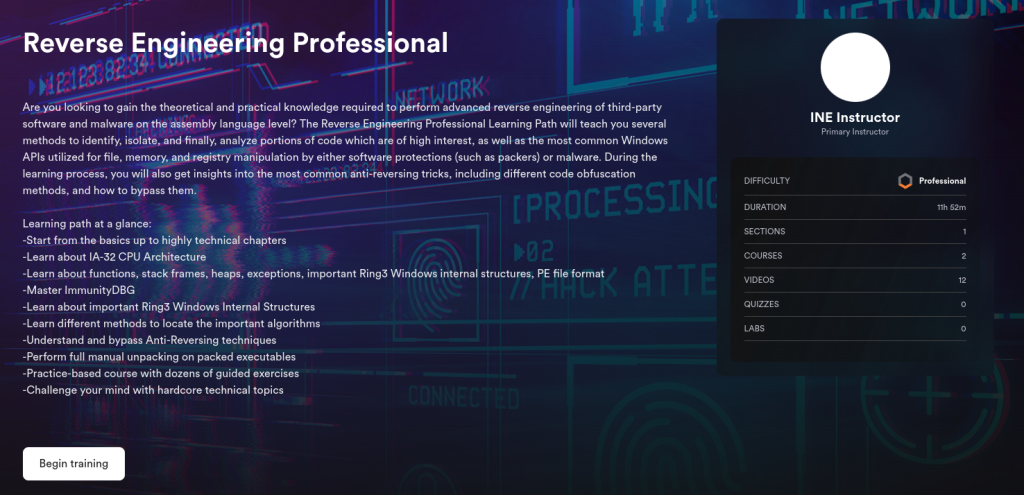
Windows System Programming: Fundamentals course will take you through the basics of getting started with system programming on Windows.

Windows System Programming: Fundamentals course will take you through the basics of getting started with system programming on Windows.

This course will familiarize students with all aspects of writing Assembly code on the ARM platforms. By the end of this course students will be able to understand and write Assembly programs on the ARM platform. This includes being able to understand programs that were created by a high level language compiler. This course is fundamental for anyone wishing to do reverse engineering on the ARM platforms. The BeagleBone family of boards is used in this course.
 ARM processors now power billions of mobile and IoT devices today! Understanding the basics of ARM assembly provides the foundation for diving deep into ARM exploitation and reverse engineering. This course focuses on teaching you the basics of ARM assembly!
ARM processors now power billions of mobile and IoT devices today! Understanding the basics of ARM assembly provides the foundation for diving deep into ARM exploitation and reverse engineering. This course focuses on teaching you the basics of ARM assembly!

This course will familiarize students with all aspects of reverse engineering (reversing) Windows 32-bit applications for the purposes of locating flaws and developing exploits. By the end of this course students will be able to understand, locate, and exploit all of the common flows in 32-bit Windows software. These flaws include, but are not limited to, buffer overflow, heap overflows, format string flaws, section overflows, and kernel flaws. Along the way students will gain a better understanding of how Windows 32-bit applications work and will be exposed to a number of common reversing tools such as specialized debuggers (IDA Pro) and fuzzers. As always, you will also learn how to leverage Python and other scripting tools in order to automate the discovery and exploitation of software flaws.

This course will familiarize students with all aspects of reverse engineering (reversing) Linux 32-bit applications for the purposes of locating flaws and developing exploits. By the end of this course students will be able to understand, locate, and exploit all of the common flows in 32-bit Linux software. These flaws include, but are not limited to, buffer overflow, heap overflows, format string flaws, section overflows, and kernel flaws. Along the way students will gain a better understanding of how Linux 32-bit applications work and will be exposed to a number of common reversing tools such as specialized debuggers (IDA Pro) and fuzzers. As always, you will also learn how to leverage Python and other scripting tools in order to automate the discovery and exploitation of software flaws.

Are you looking to gain the theoretical and practical knowledge required to perform advanced reverse engineering of third-party software and malware on the assembly language level? The Reverse Engineering Professional Learning Path will teach you several methods to identify, isolate, and finally, analyze portions of code which are of high interest, as well as the most common Windows APIs utilized for file, memory, and registry manipulation by either software protections (such as packers) or malware. During the learning process, you will also get insights into the most common anti-reversing tricks, including different code obfuscation methods, and how to bypass them.